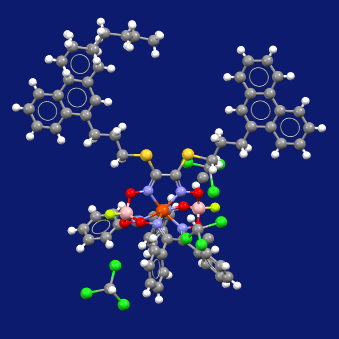The 2020 version of the Cambridge Structural Data System (CSDS) is available for downloading. You can download it from the the UC CSDS distribution site at UCLA or directly from CCDC. The UCLA site also includes our activation key, which you’ll need to activate the software (and to download the ZIP file from CCDC.
- Because CSDS is timelocked, the 2019 version will stop working at the end of March.
- The CSDS ZIP file is pretty large and may take a while to download. If you’re downloading from the CSDS site, you’ll still need the activation key from the UCLA site to download the software as well installing it.
- If you only want to search the Cambridge Structural Database to view structures to get associated data and/or citation, or want to download the structures, you can use WebCSD to search CSD without downloading the additional programs like Mercury, Mogul, and Hermes.
- However, if you want to use the CSD files for 3D printing, you will need CSDS so you can access Mercury.
Installation Tips
- During the installation, you’ll now get a prompt to enter the 36-character activation key to register your copy. Previously you didn’t have to register until you opened ConQuest or one of the other programs for the first time.
- I recommend you enter the activation key at the beginning of the installation process and not after.
- There is a Windows known issue with this new version, where Mercury, Mogul, and the other programs will crash after you open them. According to the CCDC, it’s probably a graphics incompatibility issue where cached files from the older 32-bit programs are interfering with the new 64-bit programs.
- The first option, deleting any files in the Qtshadercache folder, will likely fix the problem. If you can’t find the file at %UserProfile%\AppData\Local\cache\qtshadercache, try searching the hard drive for qtshadercache.
CSDS is a suite of databases for searching, visualizing, and analyzing crystallographic data for organic and metal-organic compounds. It includes the main suite of CSD programs, plus additional programs like GOLD (Protein-ligand docking), DASH (structure solution from powder diffraction data), and CrossMiner (pharmacophore-based cross-searching of structural databases).
If you have questions about accessing CSDS or WebCSD, please contact tmvogel@ucsd.edu.
(Image: Experimental Crystal Structure Determination for CCDC 1532514 (Refcode: BATMAN). From: Varzatskii et al. DOI: 10.1016/j.ijhydene.2017.05.092. Visualized in Mercury.)

